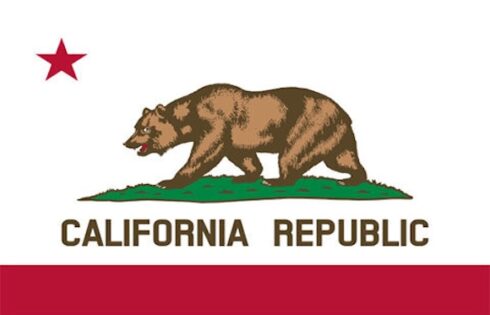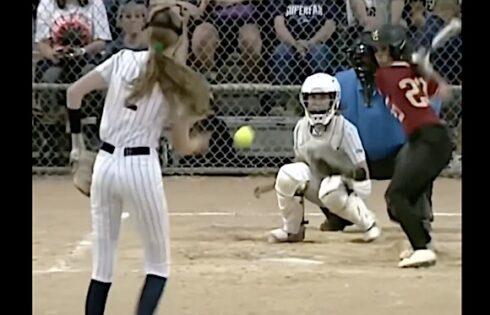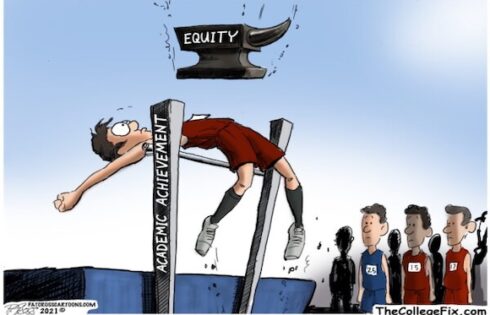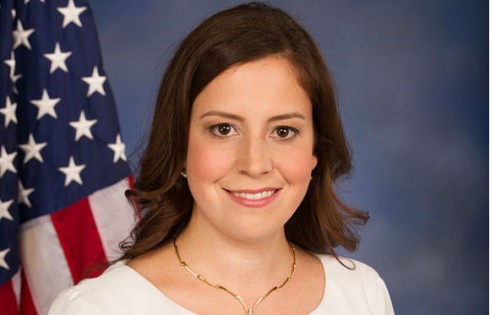
I (accidentally) came across this Michael Harriot piece in The Root yesterday.
As is typical of the site, it employs an eye-opening headline: “Government Study: School is Racist” (which Harriot admits could “could go down as the greatest clickbait of all time”), and the corresponding article delves into the disproportionate discipline rates between white and black students in America’s schools.
As per the headline, our country’s schools “discriminate” against black students because this demographic is “much more likely than their white counterparts to be punished in school.”
However, this is the usual — and specious — “disproportionality automatically equals racism” argument:
The [Government Accountability Office] found that black students are overrepresented in the disciplinary data, which is a very nice way of saying that black children are punished more often and receive harsher punishments than white kids. “These disparities were widespread and persisted regardless of the type of disciplinary action, level of school poverty or type of public school attended,” the report explains.
For example, at every level of discipline, the GAO found that white kids were underrepresented and black kids were overrepresented. In fact, black students were most overrepresented in the areas that allowed school officials to arrest, kick out or suspend the black kids (out-of-school suspension, corporal punishment and school-related arrest).
The superficiality doesn’t decrease much as the story continues; in fact, Harriot resorts to snarky anecdotes to add credence to the report. For instance: “Maybe white kids are better-behaved: I almost bought into this theory until I remembered how white kids act in the cereal aisles of supermarkets. Plus, they call their parents by their first names and start cussing when they’re only in the third grade.”
Cute.
“Disparate impact” complaints like Harriot’s are problematic on several levels. For one, fears of litigation had led schools to adopt objective-as-possible “zero tolerance” policies for discipline infractions so that, no matter what, the same punishments were meted out to whoever committed an offense.
Unfortunately, even with zero tolerance, race disparities continued. Racial bean counters fervently believe, you see, that everything in society must mirror the racial demographics of the country. (That is, unless racial minorities are over-represented in a positive realm.)
Disparate impact always targets school personnel and especially teachers — it is their racism which is the root (no pun intended) of the issue.
Think about that for a minute: Teachers, one of the most liberal constituencies in the US, are … incorrigibly racist? But concentrating on this avoids the obvious point: Maybe some groups of students actually do misbehave more than others.
City Journal’s Heather Mac Donald answered this just yesterday:
According to federal data, black male teenagers between the ages of 14 and 17 commit homicide at nearly 10 times the rate of white male teenagers of the same age […] That higher black homicide rate indicates a failure of socialization; teen murderers of any race lack impulse control and anger-management skills. Lesser types of juvenile crime also show large racial disparities. It is fanciful to think that the lack of socialization that produces such elevated rates of criminal violence would not also affect classroom behavior.
Mac Donald also touches on another facet affecting varying discipline rates: previous student misbehavior. She dissects one of the “two concrete examples of allegedly biased discipline” featured in the GAO report, that which compares a black 10th-grader to a white 12th-grader. The former, who had 19 previous infractions received a one-day suspension for skipping school; the latter, with 28 previous referrals, got only a conference with the principal:
One would need to know several things before concluding that this disparate treatment was the result of bias. What were the grounds for each student’s previous disciplinary referrals: smoking a cigarette, or punching his teacher? How many previous warnings and alternative discipline methods had each student received? The younger black student’s rate of referrals is outpacing the older white student’s by more than a third. That suggests that he was more of a problem student.
A 2014 study confirms the “previous misbehavior” factor:
The inclusion of a measure of prior problem behavior reduced to statistical insignificance the odds differentials in suspensions between black and white youth. Thus, our results indicate that odds differentials in suspensions are likely produced by pre-existing behavioral problems of youth that are imported into the classroom, that cause classroom disruptions, and that trigger disciplinary measures by teachers and school officials. Differences in rates of suspension between racial groups thus appear to be a function of differences in problem behaviors that emerge early in life, that remain relatively stable over time, and that materialize in the classroom […]
You won’t hear much about this in the media, a result (to quote Mac Donald) “of the taboo against researching racial behavioral disparities.” It’s much easier to have teachers and administrators examine their “inherent biases” and “latent racism,” and for them to make adjustments for “understanding” black culture.
MORE: The poison that is the ‘Courageous Conversation’ program
MORE: Education Dept. needs to scrap Obama-era school discipline guidelines
IMAGE: YouTube
Like The College Fix on Facebook / Follow us on Twitter







Please join the conversation about our stories on Facebook, Twitter, Instagram, Reddit, MeWe, Rumble, Gab, Minds and Gettr.